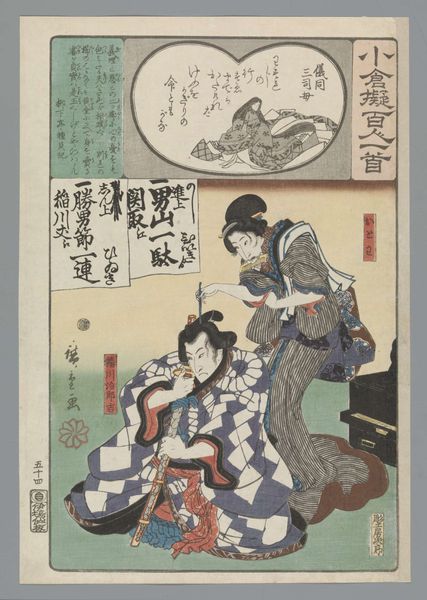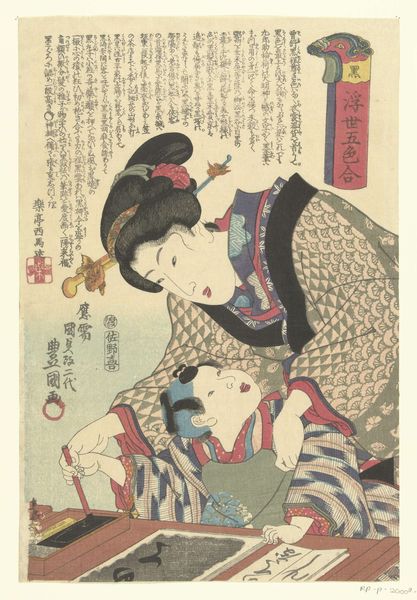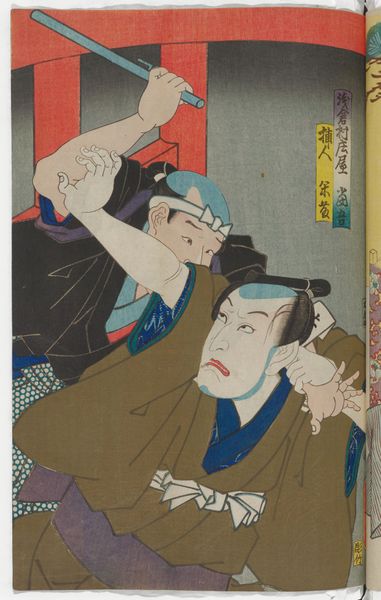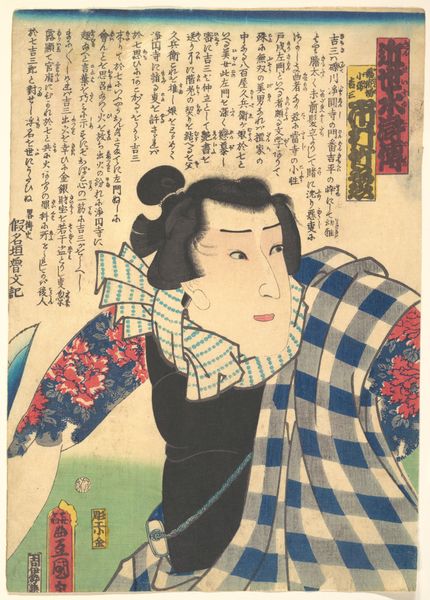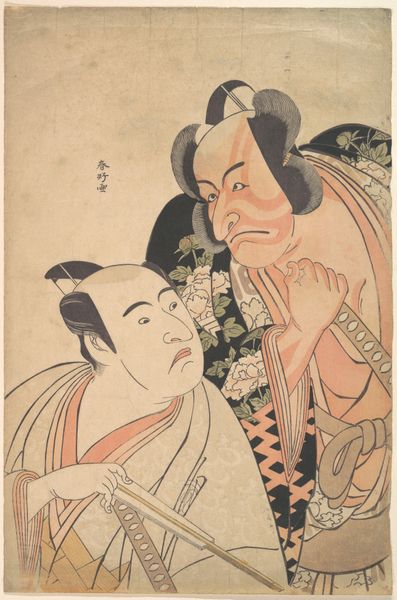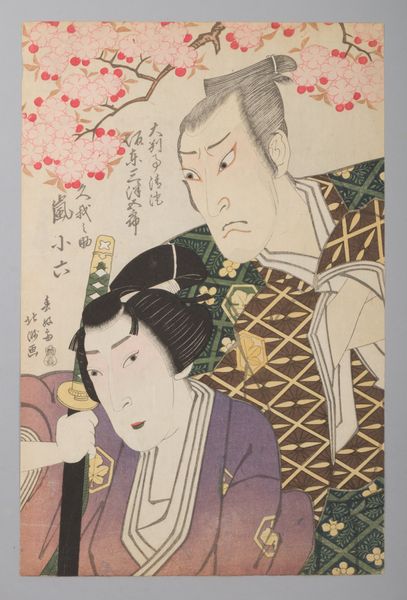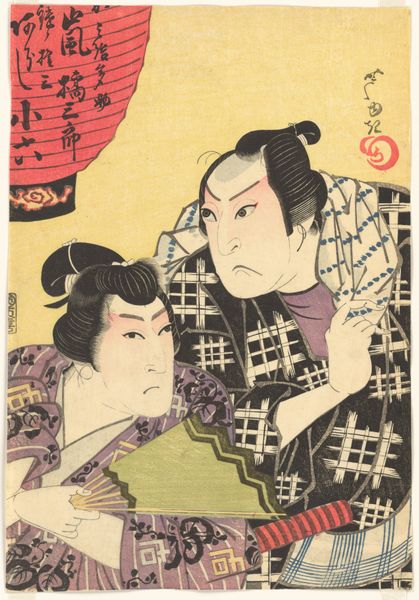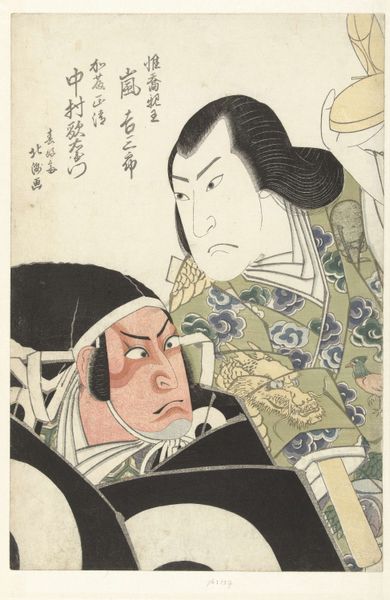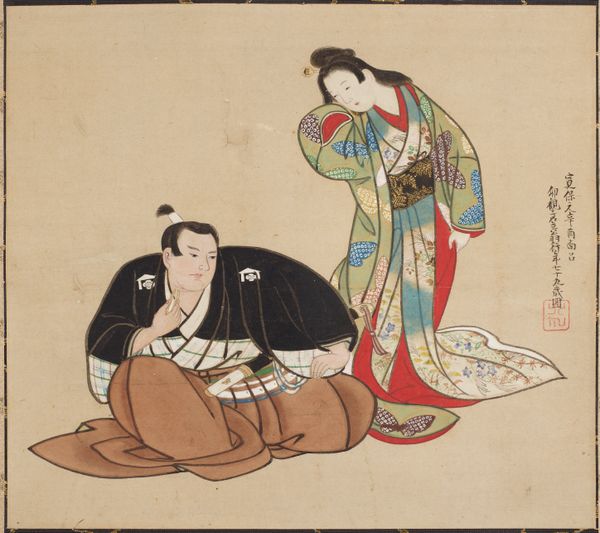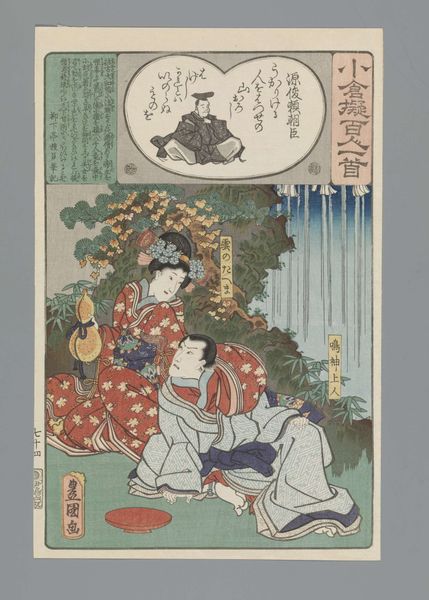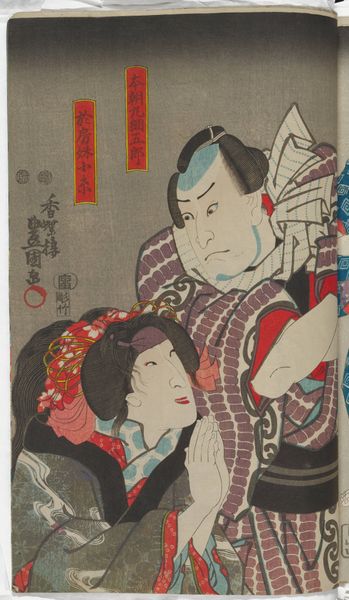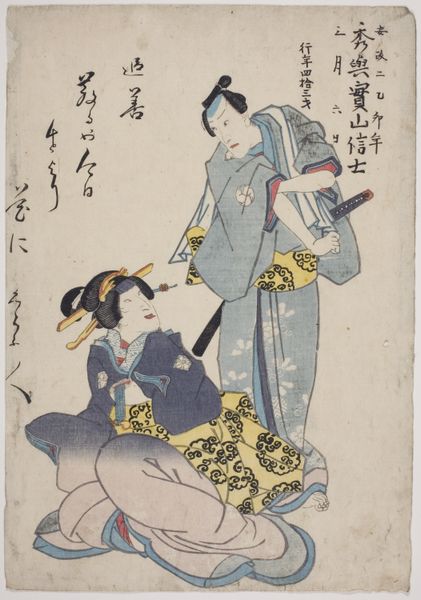
Kômori Yasugorô begging for money from Izutsuya Yosaburô 1860 - 1865
0:00
0:00
print, woodblock-print
#
portrait
# print
#
asian-art
#
ukiyo-e
#
figuration
#
woodblock-print
#
genre-painting
#
watercolor
Dimensions: height 352 mm, width 241 mm
Copyright: Rijks Museum: Open Domain
Editor: This is "K\u00f4mori Yasugor\u00f4 begging for money from Izutsuya Yosabur\u00f4" by Utagawa Kunisada, a woodblock print dating from 1860 to 1865, currently housed at the Rijksmuseum. The scene is dominated by these two figures, and there's a lot of text too... What can you tell me about how this print might have functioned in its time? Curator: Well, this Ukiyo-e print offers us a fascinating glimpse into Edo-period social dynamics. Think about the context: woodblock prints weren't just art objects, but also a form of mass media. These images would have circulated widely, shaping public perceptions and reinforcing societal norms. Notice the theatrical gestures and expressions. These signal a narrative, likely from a popular Kabuki play, referencing established social hierarchies. Editor: So, it's like a visual excerpt from popular culture, meant for public consumption? Curator: Precisely! This print puts on display the act of begging and illustrates an encounter between different social strata, which was important because Ukiyo-e were often commissioned by merchants and other members of the increasingly influential middle class. Did you notice what is in their hands? How do the colors influence your reading? Editor: I do. One is holding out a hand, pleading. And the other is holding a coin tray! The coloring, it almost flattens them out and makes it appear like theatre. Curator: It is worth noting that censorship and regulation of content, especially as related to portrayal of authority and social unrest, was an ongoing practice within Japanese society during this period. The artist had to negotiate and work through various socio-political institutions, be it to obtain formal permissions to circulate prints, or find informal methods for expression and satire, don't you think? Editor: That makes me see the work in an entirely new way. I now appreciate it more than at first. Curator: Indeed. It’s a complex piece of art history that can give valuable insight into cultural and societal norms of the Edo period!
Comments
No comments
Be the first to comment and join the conversation on the ultimate creative platform.
